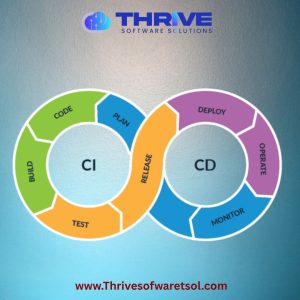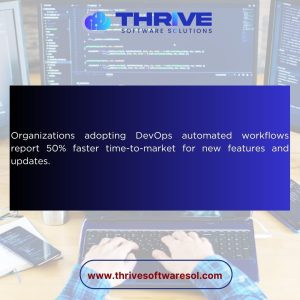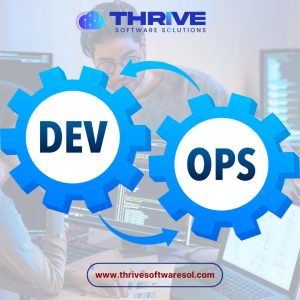In today’s fast-paced digital landscape, businesses face relentless pressure to innovate, adapt, and stay competitive. Yet, many organizations are tethered to outdated systems that stifle progress. A 2024 Statista report projects the global application modernization market to reach $36.86 billion by 2027, underscoring the urgency of legacy app modernization. Legacy systems, often built decades ago, struggle to meet modern demands for agility, scalability, and security. Legacy app modernization transforms these outdated applications into agile, efficient solutions, driving business success. This article explores why legacy modernization is critical, detailing challenges, strategies, benefits, and real-world examples to provide a comprehensive guide for business and IT leaders.
What Are Legacy Applications and Why Do They Matter?
Legacy applications are software systems built on outdated technologies, programming languages, or architectures that remain critical to business operations. Think of mainframes running COBOL or monolithic applications from the 1990s. While reliable for years, these systems are often inflexible, costly to maintain, and incompatible with modern platforms like cloud or AI-driven solutions. A 2024 Gartner study notes that 80% of enterprises still rely on legacy apps modernization to support core functions, yet these systems hinder digital transformation.
Legacy application modernization involves upgrading or transforming these systems into contemporary solutions that align with current business needs. By modernizing, businesses unlock agility, reduce costs, and enhance customer experiences, positioning themselves for long-term success in a dynamic market.
Challenges with Legacy Applications
Legacy systems pose significant hurdles that can cripple business growth. Understanding these challenges is the first step toward effective legacy modernization.
1. High Maintenance Costs
Legacy applications are expensive to maintain. A 2024 Mertech report reveals that the U.S. government spends over $100 billion annually on IT, with 80% allocated to maintaining legacy apps modernization efforts. Outdated codebases, monolithic architectures, and reliance on specific hardware drive up operational costs, diverting funds from innovation.
2. Security Vulnerabilities
Outdated systems are prime targets for cyberattacks. A 2024 IBM study found that 45% of data breaches target legacy systems due to unpatched software and lack of modern security features like encryption or intrusion detection. Legacy modernization mitigates these risks by integrating advanced security protocols.
3. Limited Scalability and Integration
Legacy applications struggle to scale with growing business demands or integrate with modern technologies like APIs or cloud platforms. A 2024 IDC survey indicates that 65% of businesses face integration issues with legacy apps modernization, leading to data silos and inefficiencies.
4. Technical Debt and Knowledge Gaps
Poorly documented code and reliance on obsolete languages like COBOL create knowledge silos. When experienced developers leave, successors struggle to maintain or update systems, exacerbating technical debt. A 2024 Red Hat study highlights technical debt as a top challenge in legacy application modernization.
5. Poor User Experience
Legacy systems often feature outdated interfaces, leading to subpar customer and employee experiences. A 2023 Adobe and G2 survey found that 52% of employees are dissatisfied with outdated software, and 32% have switched jobs due to poor technology experiences.
Why Legacy App Modernization Drives Business Success
Legacy app modernization addresses these challenges, delivering transformative benefits that propel businesses forward.
1. Enhanced Agility and Innovation
Modernized applications enable businesses to adapt quickly to market changes. By adopting microservices or cloud-native architectures, companies can roll out new features faster. For example, Delta Air Lines modernized its reservation system, improving reliability and enabling innovative features like real-time booking updates, boosting passenger satisfaction.
2. Cost Efficiency
Modernization reduces maintenance costs by replacing expensive legacy infrastructure with scalable cloud solutions. A 2024 CAI study estimates that legacy modernization can cut maintenance costs by 30–50%. This frees up budgets for strategic initiatives like AI integration or customer experience enhancements.
3. Improved Security and Compliance
Modern systems incorporate robust security features, reducing vulnerabilities. A 2024 Sophos report notes that modernized applications reduce cyberattack risks by 40%. Legacy app modernization also ensures compliance with regulations like GDPR and HIPAA, avoiding costly penalties.
4. Better Customer and Employee Experiences
Modern applications offer intuitive interfaces and seamless integrations, improving user satisfaction. A 2024 McKinsey study found that businesses with modernized systems saw a 20% increase in customer retention due to enhanced experiences.
5. Scalability for Growth
Cloud-based legacy apps modernization enables businesses to scale effortlessly. American Airlines’ migration to cloud platforms improved scalability and operational efficiency, allowing rapid adaptation to customer demands.
Learn more about cloud computing services.
Steps for a Successful Legacy Modernization Journey
A structured approach ensures legacy app modernization delivers maximum value. Here’s a step-by-step guide:
1. Assess Current Systems
Conduct a technical audit to evaluate architecture, dependencies, and business value. A 2025 MobiDev report stresses the importance of identifying technical debt and security risks upfront.
2. Define Business Objectives
Align modernization with goals like cost reduction, improved UX, or scalability. A needs matrix can prioritize high-impact areas, as noted in a 2024 Brainhub guide.
3. Choose the Right Strategy
Select a modernization approach based on complexity, budget, and goals. A 2024 Red Hat study suggests hybrid strategies for complex systems.
4. Engage Stakeholders
Involve business and IT teams to ensure buy-in. A 2024 CAI study found that stakeholder engagement boosts success rates by 35%.
5. Plan Data Migration
Ensure data accuracy and security during migration. A 2024 Astera report highlights the need for thorough validation to prevent data loss.
6. Implement Incrementally
Use a phased rollout to minimize disruptions, as recommended by a 2023 Whatfix study. This allows iterative adjustments and employee adaptation.
7. Monitor and Optimize
Post-modernization, track performance using tools like AWS CloudWatch or Azure Monitor. A 2025 Appinventiv study emphasizes continuous optimization to sustain benefits.
Conclusion: Embrace Legacy App Modernization for Future Success
In a world where 80% of legacy applications will be modernized by 2030, legacy app modernization is no longer optional—it’s a strategic imperative. By addressing challenges like high costs, security risks, and scalability limitations, businesses can unlock agility, efficiency, and innovation. Whether through encapsulation, rehosting, or rebuilding, legacy modernization transforms outdated systems into powerful assets.
Start your legacy application modernization journey today to stay competitive, delight customers, and drive sustainable growth in the digital age. Contact Thrive Software Solutions for more inforation.






